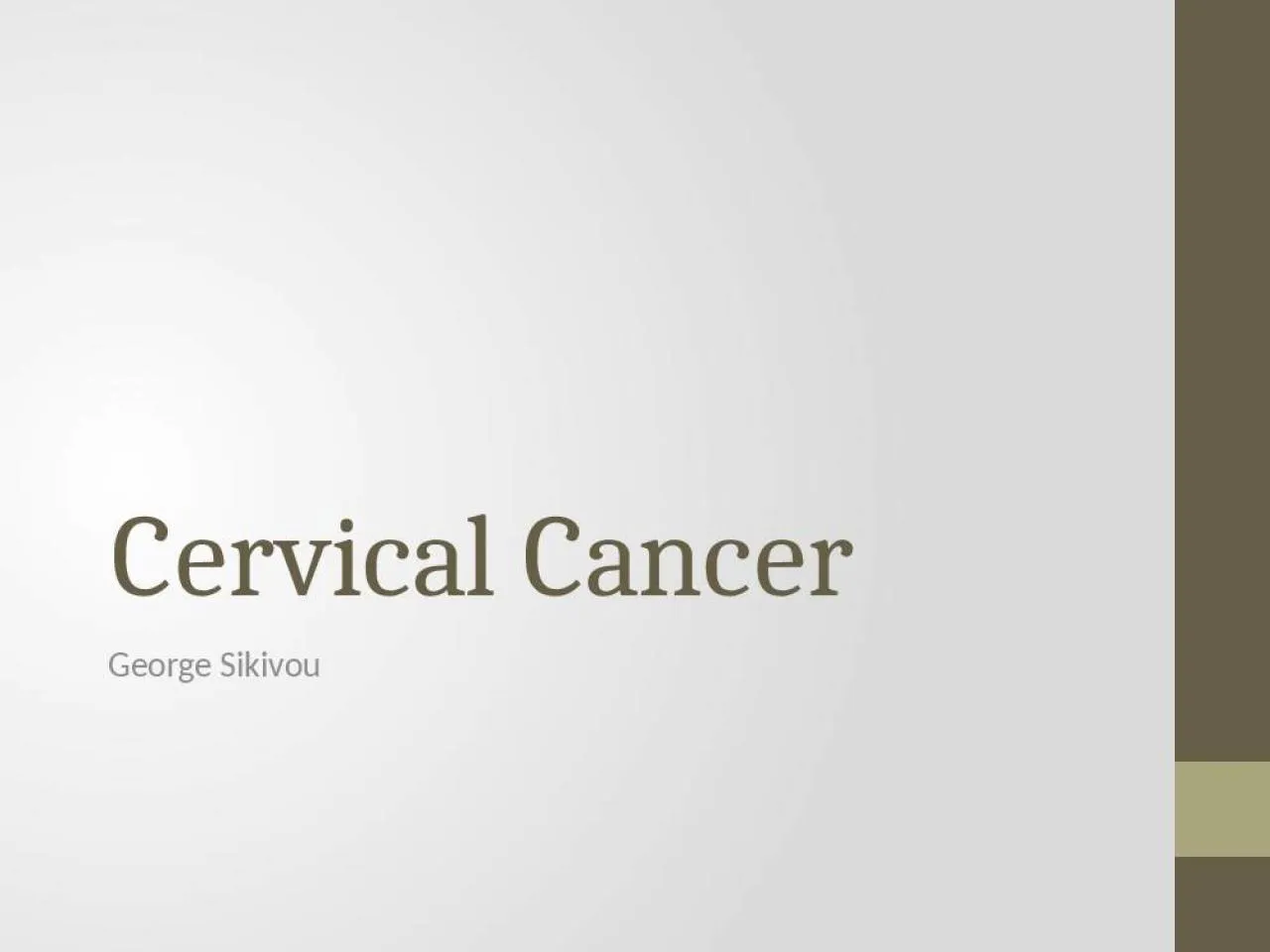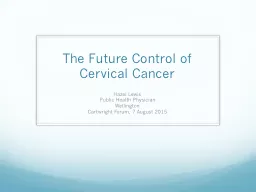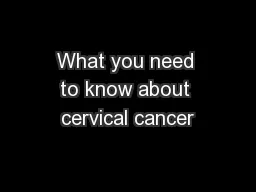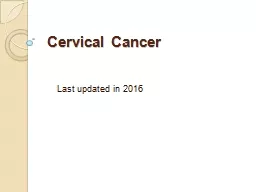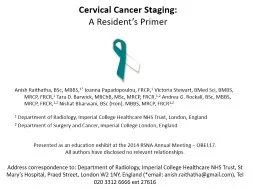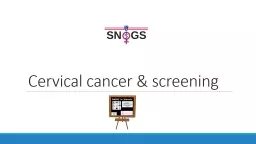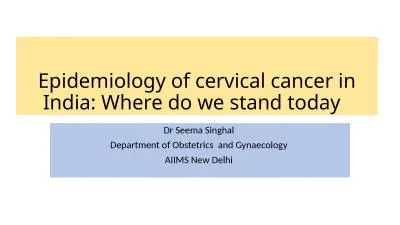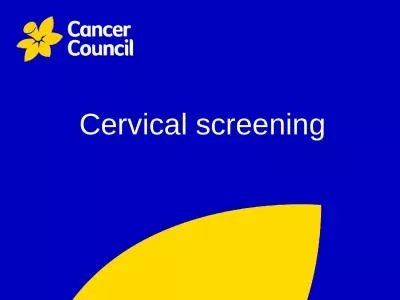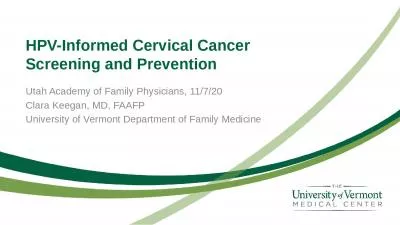PPT-Cervical Cancer George Sikivou
Author : joy | Published Date : 2022-04-06
What Is I t The cancer of the cervix which is caused mainly by the Human Papilloma Virus HPV 70 of cervical cancers and precancerous cervical lesions are caused
Presentation Embed Code
Download Presentation
Download Presentation The PPT/PDF document "Cervical Cancer George Sikivou" is the property of its rightful owner. Permission is granted to download and print the materials on this website for personal, non-commercial use only, and to display it on your personal computer provided you do not modify the materials and that you retain all copyright notices contained in the materials. By downloading content from our website, you accept the terms of this agreement.
Cervical Cancer George Sikivou: Transcript
Download Rules Of Document
"Cervical Cancer George Sikivou"The content belongs to its owner. You may download and print it for personal use, without modification, and keep all copyright notices. By downloading, you agree to these terms.
Related Documents

